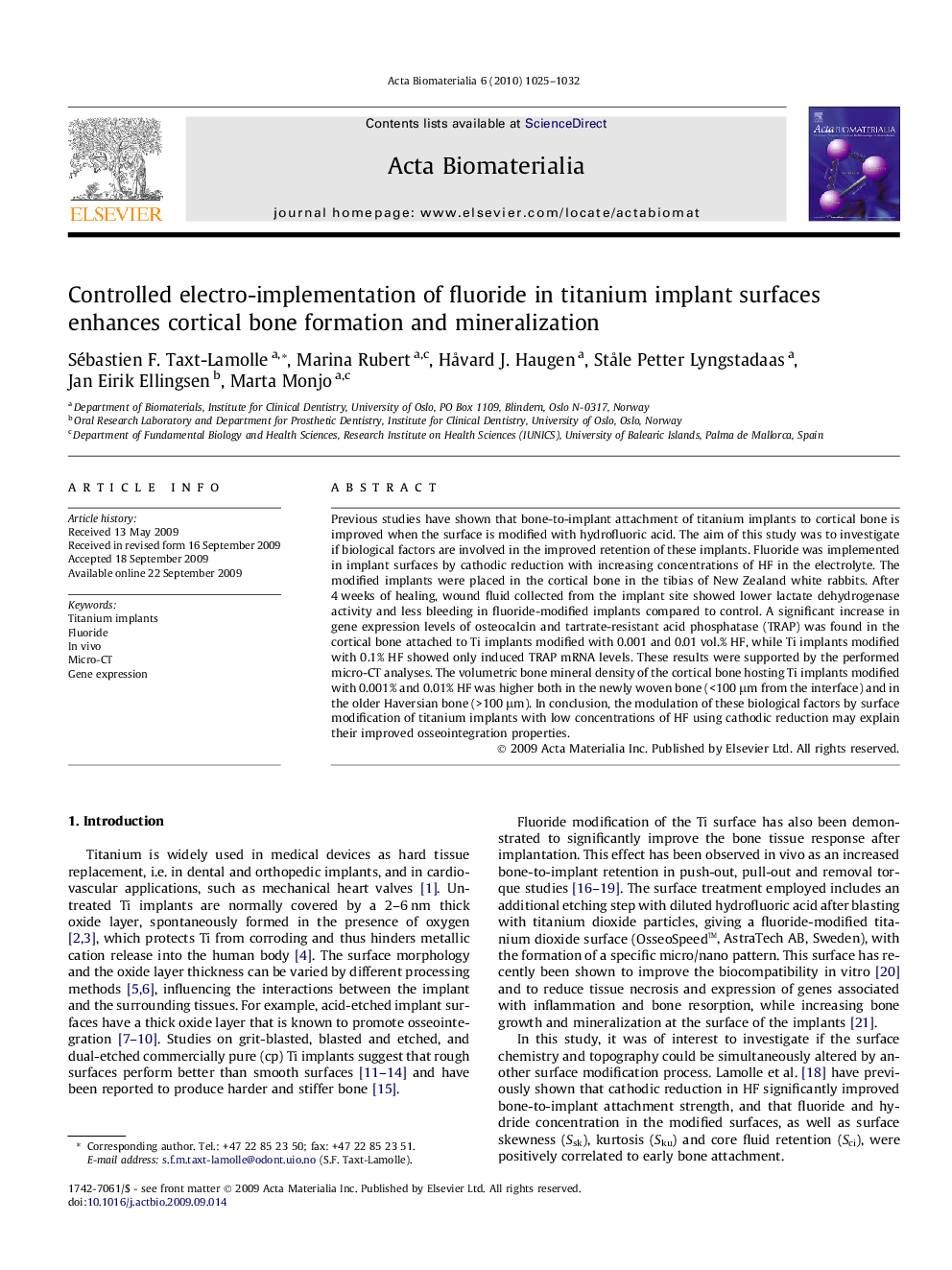| Article ID | Journal | Published Year | Pages | File Type |
|---|---|---|---|---|
| 1675 | Acta Biomaterialia | 2010 | 8 Pages |
Previous studies have shown that bone-to-implant attachment of titanium implants to cortical bone is improved when the surface is modified with hydrofluoric acid. The aim of this study was to investigate if biological factors are involved in the improved retention of these implants. Fluoride was implemented in implant surfaces by cathodic reduction with increasing concentrations of HF in the electrolyte. The modified implants were placed in the cortical bone in the tibias of New Zealand white rabbits. After 4 weeks of healing, wound fluid collected from the implant site showed lower lactate dehydrogenase activity and less bleeding in fluoride-modified implants compared to control. A significant increase in gene expression levels of osteocalcin and tartrate-resistant acid phosphatase (TRAP) was found in the cortical bone attached to Ti implants modified with 0.001 and 0.01 vol.% HF, while Ti implants modified with 0.1% HF showed only induced TRAP mRNA levels. These results were supported by the performed micro-CT analyses. The volumetric bone mineral density of the cortical bone hosting Ti implants modified with 0.001% and 0.01% HF was higher both in the newly woven bone (<100 μm from the interface) and in the older Haversian bone (>100 μm). In conclusion, the modulation of these biological factors by surface modification of titanium implants with low concentrations of HF using cathodic reduction may explain their improved osseointegration properties.
